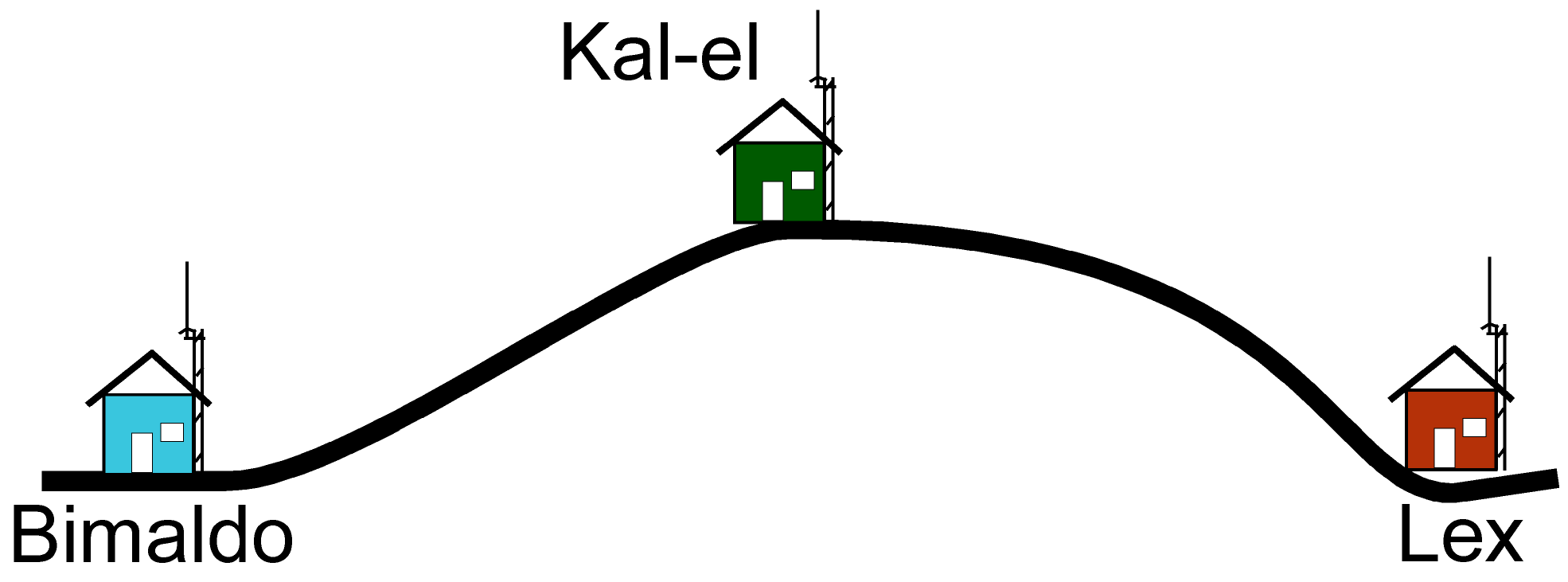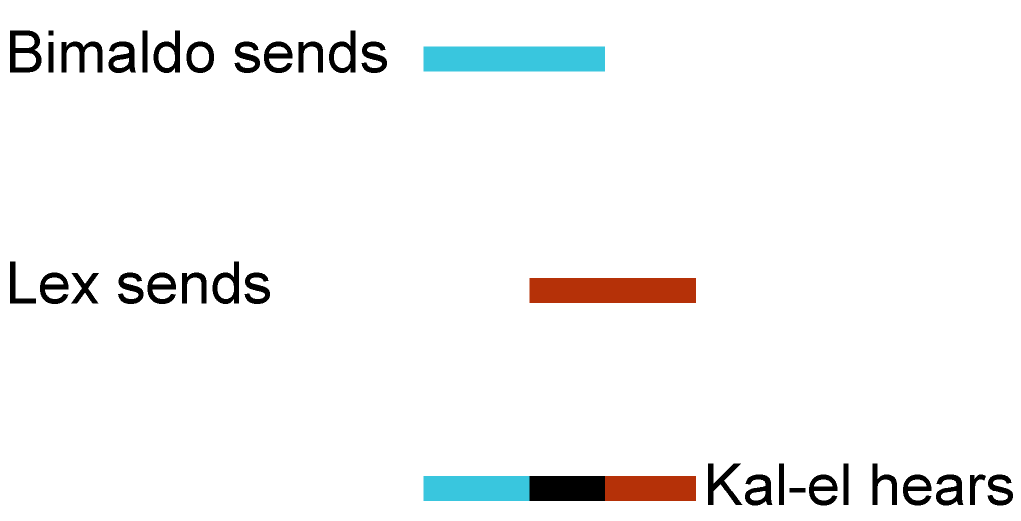Hidden Transmitter Syndrome and Exposed Receiver Syndrome
See also
FAQ: CSMA
Over‑The‑Horizon packet radio
Most packet radio is operated on a channel where there are some number of stations on the air, talking and listening.
The count of stations with traffic to send to the channel varies as the evening wears on.
Each station with something to send independently listens for the channel to become quiet and then keys up and sends a packet.
Some of the stations on the channel are close enough to your station that you can avoid transmitting so as to not collide.
But some are over a hill or just too far away and you may transmit at the same time as those distant stations.
The use of a mid-point digipeater or node to relay is based on the premise that a station cannot hear another station they want to send traffic to.
The originating station will send to the digipeater and then the digipeater will send to the final destination.
Hidden Transmitter Syndrome (HTS)
When a station (call him Bimaldo) goes to transmit, it is trying to talk to one particular other station, Kal‑el, (assuming we are in CONNECT mode here).
It is quite possible that Lex, another station on frequency, can't hear Bimaldo at all, but is stronger to Kal‑el than Bimaldo.
Bimaldo transmits, and just in the middle of his transmission, Lex hits the ‹ENTER› key and hearing nothing, his TNC sends a packet, blotting out Bimaldo's transmission.
See diagram.
Hidden Transmitter Syndrome means that one of your stations is able to talk to the high station, but can't be heard by one
or more of the other low stations, and so the transmissions collide, causing each station to attempt to retry.
If the transmission density is enough (too many transmissions, not enough clear‑channel‑time) then when the retries start, the problem cascades.
This cascade would be evident by low enough clear channel time that no messages get through.
Eventually many of the stations will retry‑out and disconnect.
A remedy for HTS is to impose obligatory spacing between transmissions for each station.
Good automation would dramatically increase the spacing each time a transmission fails to get through, and then to make smaller reductions in the spacing after each success.
Other remedies include
- establishing a control system to provide channel permission for each station (DAMA)
- restrict channel access to a select few stations having appropriate timing adjustments to compensate for the number of stations.
- install a low-latency repeater system and run all traffic through the repeater instead of the simplex channel
- have a separate channel for each station to station connection, completely eliminating the chance for collisions
|
 |
 |
| Lex transmits when his receiver can't hear anything, trashing Bimaldo's message |
|
Exposed Receiver Syndrome (ERS)
Exposed Receiver Syndrome is caused because CSMA makes packet stations hold back on transmitting
if they hear any other station talking already. They wait until the channel
is entirely clear before they can transmit.
Consider this scenario:
There are multiple services on the
channel and multiple stations trying to work them.
There is a high station like Kal‑el, which is being asked to relay traffic, or is
attempting to answer some request. Because of CSMA, Kal‑el
is not allowed to transmit until it hears a quiet channel.
However, Kal-el is
so well placed that he never gets
a quiet channel, so he never transmits. It's so bad that
people think that Kal‑el is broken.
Having a receiver so well placed that it rarely or never hears a quiet channel is called Exposed Receiver Syndrome, or ERS.
Common causes of ERS include having multiple well placed relay stations on the same frequency, but located such that they hear
different sets of low‑level stations, as well as each other.